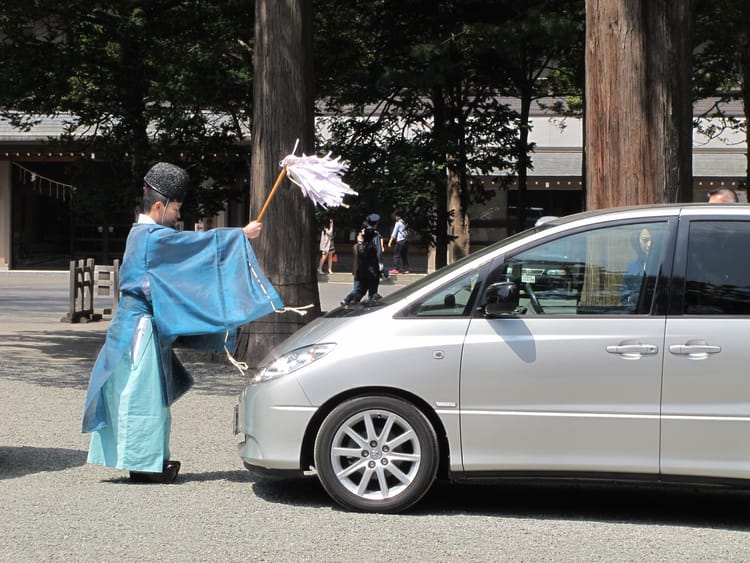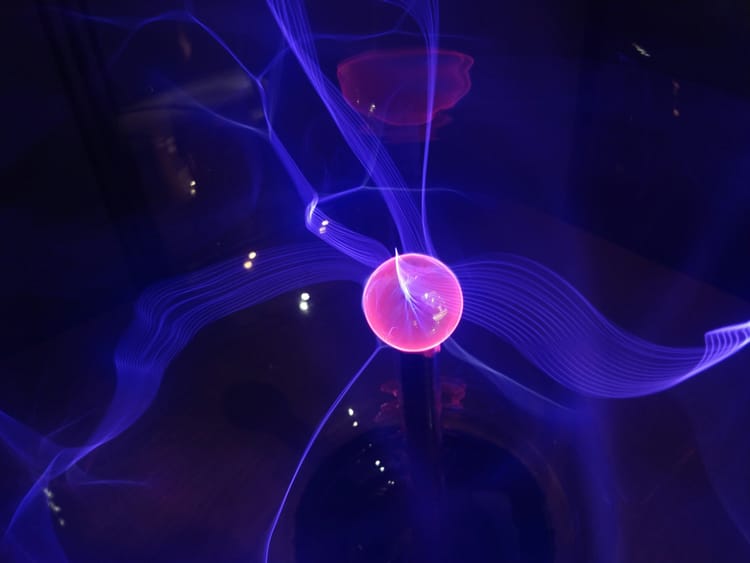What it means to heal white supremacy: restoring the cultural nervous system, cultivating Hara

This is a 'classic article' from my legacy website.
Please note that while I still consider my current work to have evolved out concepts and frameworks that I present in this piece and others, I have greatly departed, in both thinking and tone, from the kind of dualist social/racial justice discourse I embedded this piece of work within.
I consider my current work to be fully dedicated to embracing the nondual nature of the cosmos, never hardening into essentials of good or bad, right or wrong.
For a long time I have asked myself: what does it mean to decolonize activism itself?
The answer I have come to is: it means building my understanding of 'social justice' on top of practices that are ancestral to me, rather than constantly refer to dominant activist discourse, which is inevitably informed by patriarchy, capitalism and white supremacy in the most subtle ways.
I am trained as a body-centered therapist but the deeper end of my practice is founded in my research of East Asian wisdom traditions that see all phenomena as energy.
This is why I say that white supremacy is an embodied energetic problem. It can be healed, both on an individual and cultural level, by following the principles of body-centered healing.
The cultural nervous system and cultural polyvagal theory
Informed by my ancestral traditions of energy work, I understand culture as a soma, a body, a field of energies in movement and stasis, just like our individual fleshy bodies.
Following, I see cultural somas as having nervous systems of their own that emerge from the interconnection of individual nervous systems.
This understanding of culture has lead me to what I call: cultural polyvagal theory.
Cultural polyvagal theory means that I see cultures, following our learnings from regular polyvagal theory theorized by Dr. Stephen Porges, as also having an autonomic nervous system made up of:
- A social engagement system: relating to each other when feeling safe, caretaking when triggered
- A sympathetic nervous system: Healthy excitement when feeling safe, fight or flight when triggered
- A parasympathetic nervous system: Relaxation (rest and digest) when feeling safe, freeze when triggered
(If you don't know, our nervous system is maintained by the dance of these three systems. What I am presenting is a bit simplified but you can read more about regular Polyvagal Theory here.)
I see ‘activist’ work (I don't love how this word plays into capitalist paradigms of production) as a restoration of the cultural autonomic nervous system’s wellness.
This is why I think of my work as social restoration, rather than social justice.
Justice isn’t my goal, especially in the common sense of people getting what they deserve. I see justice as something that comes naturally from working towards restoring wellness.
Aiming for social restoration means seeing our culture as resilient, empowered and having its own wisdom of healing - just like how any good therapist would see their clients.
The implication of cultural polyvagal theory is that: social restoration can be facilitated skillfully by applying the principles of somatic therapy to our cultural soma, not forgetting that somatic therapies are based on various spiritual and embodiment practices of pre-colonial people from around the world.
Whiteness as an energy that dysregulates the cultural nervous system
My understanding of culture as soma is why I treat whiteness as an energy rather than as a set of characteristics that are unique to white people.
Yes, there is an external experience of being white (privilege, skin tone) that only white people know.
But there is also an internal experience of whiteness as an energetic force, much like how Daoists describe the world in Yin and Yang. This is what my practice focuses on.
(I think this gets lost in translation quite a bit so it is nice to clear this up.)
To me, whiteness is an energy of the larger cultural autonomic nervous system, which means it's felt in all of the individual nervous systems that compose it.
To me, the posture of our cultural and individual somas hold whiteness in the same way: rigid and disembodied.
I see this rigidity and disembodiment having the following impact on our nervous system:
- The mind becomes cut off from the rest of the body, engaging the ‘friendly’ social nervous system only to appease and avoid conflict.
- The heart, the sympathetic nervous system, becomes overly-activated and fragile, easily triggered into fight or flight for devastating effect.
- The gut (enteric nervous system), the mainstay of the parasympathetic nervous system, becomes sickened and in a state of shut down. Causing carnage because of its hunger for a sense of home.
If you're a POC reading this, please remember this is also us. We also experience whiteness in our individual somas this way. Worse even, we get abused and violated because of systems that protect white people from restoring their somas.
In the cultural soma, whiteness shows up as a hyper-vigilant need to dominate and control the soma of others. This is what we usually call white supremacy.
But whiteness can take other forms.
For example, call-out culture* is one of the ways in which I see the soma of social justice communities express whiteness.
*Call-out culture, to me, describes attitudes in social justice community that creates an environment where there is: no limit or accountability on the person calling-out and no real accepted moral way for the person being called-out to do anything but accept what is happening. A critique of call-out culture is separate from an analysis of whether an individual incident of naming harm was appropriate or ethical.
Disconnection from ancestry and cultural complex trauma
So where does this energy of whiteness come from?
My observation is that whiteness is born out of cultural complex trauma, the wounds of being disconnected from ancestry.
In regular trauma psychotherapy it is understood that one of the greatest factors that determine our ability to regulate our nervous system and handle traumatic stress is the quality of our 'attachment': our imprinted feelings of safety or unsafety in our relationships to our caregivers.
(You can read more about regular attachment theory here.)
Conceptualizing a cultural nervous system means extending this idea of attachment to not just caregivers in our childhood but to what we may call our parental cultures. The cultural soma's ability to handle traumatic stress is deeply impacted by its attachment to its parental cultures.
And of course, anything that affects the cultural soma has an impact on our individual somas. This is how whiteness works.
(Indigenous researcher, Estelle Simard of The Institute of Culturally Restorative Practices had formulated a cultural attachment theory as early as 2005.)
Whiteness and the gut
As a body-centered therapist, locating whiteness as a product of cultural complex trauma brings us to another question: how does the body hold whiteness?
My understanding, based on Japanese energy medicine, is that Hara (the Japanese word for the energetic center in the lower body) is where we hold a sense of home in our body. When we start listening to our guts, we come to face-to-face with intense fears around lack of belonging. Hara is where our deepest attachment traumas live, both from childhood and ancestry.
I know this because I know this in my body. I have also heard others voice it.
And in fact, modern neuroscience is at the tipping point of verifying what the ancients have always known.
It is widely known now that gut health is deeply connected with our mental health. Poor gut health is also a cause of many autoimmune disorders.
This is significant because, gut flora, the bacteria that maintain the nourishing soil in our bellies, is something that we inherit through ancestry.
Not only that, trauma has been known to permanently affect the gut health of an individual.
Cultivating Hara: a way for us to own our responsibility in healing whiteness
If whiteness lives in our guts, the first step to social restoration work is remarkably simple: cultivate Hara.
Why? Because our soma is a part of the cultural soma.
As adrienne maree brown says in her book Emergent Strategy (paraphrased), the world is fractal: what we do at the smallest and most subtle levels make up the bigger picture.
Having a healthy Hara restores our relationship with ourselves, to the people we are intimately close to, and to the large community and culture.
Below is a breathing exercise to help you cultivate your Hara. If there is one meditative practice I would encourage social justice communities to embrace, it would be this one.
IMPORTANT NOTE: There is no need to rush. Hara is a powerful place with many unseen emotions and memories. It is best to contact it gently and slowly.
- Come into a relaxed sitting, standing, or lying position. If you are sitting or standing, try to keep your back straight but relaxed.
- Lay your hands softly on your stomach, a few finger-widths below your belly button.
- Imagine a glowing ball behind your hands, inside your belly.
- Breathe gently into this ball, in through your nose and out through your mouth or nose. (If the ball image doesn’t work for you, you can use any other kind of loving image or word.)
While breathing exercises can get advanced quickly, this simple exercise is a great place to start.
Of course, breathing exercises isn't all that is required to heal whiteness. What consciously cultivating Hara can do though is help you set an embodied sense of direction for your journey, even if it is a very winding and complex one.
You will know you are on the right path because it will feel right in your gut.
I also understand there might be critiques that embodiment and mindfulness aren't enough. True, many people tend to bypass oppression in preference for 'personal healing'.
My invitation to you is to be patient and notice if whiteness is showing up.
The journey to personal healing is not complete without addressing cultural healing as we are all part of the cultural soma. It simply might be that someone needs to get through some bits before they address others.
But if time and space allow, the healing of cultural complex trauma will show up in their lives as a necessary bridge to cross.
I trust this process deeply and it gives me great relief and hope each day.
It also may be useful to learn about Hara through your culture(s) of origin. Hara has various names: Yesod in Kabbalah, Piko in Hawaiian indigenous spirituality, the Cauldron of Warming in Celtic shamanism, Lower Dantian in Qigong, Sacral Chakra in Yoga, Kath in Sufism, the Womb in many cultures around the world, and so on.
Learning about where we come from and processing the grief in our bodies is a necessary part of healing whiteness.
Here is also a video with the same Hara breathing exercise mentioned above.
https://www.youtube.com/watch?v=rLdbrgVqtHw
Body-centered leadership: the big picture of cultural polyvagal theory
Finally, I wanted to end this little sharing with a vision of what healing looks like at the more institutional layer of the cultural soma.
One of the findings of regular polyvagal theory was that 80-90% of communication along the vagus nerve goes up from the rest of the body towards the brain. This is profoundly different from how we usually see ourselves. We tend to think life is about the brain sending information to the rest of the body.
And our institutions such as government, academia and business reflect this tyranny of the mind over the body.
Healing the cultural nervous system means shifting this dynamic by acts such as:
- Restoring IBPOC leadership and upholding the wisdom of cultures of colour
- Standing in a better, more grounded relationship to land by addressing the history colonization and white supremacy
- Restoring the leadership of queer and trans folks, historically responsible for holding magical space
- Restoring feminine leadership and honouring the pelvis as a place of knowing
- Changing how knowledge is made and upheld, freeing it from the control of top-down academic institutions
As you can tell, all of these things are already happening, however slow and gentle the process may seem.
My invitation is to hold our cultural soma with a loving kindness, knowing that we are resilient as a humanity as we are as individuals.
***
Are you a therapist, facilitator, organizer or healer called to a deeper exploration of subjects discussed in this post?
I provide coaching and consulting services for individual practitioners, enterprises, and organizations that are committed to intersectional cultural healing. You can find more information here.
***
Inspirations/resources
"Emergent Strategy" by adrienne maree brown
https://www.akpress.org/emergentstrategy.html
"The Roots of White Supremacy Are In Our Bodies, Part 1" by Madelanne Rust D'Eye
http://bodyintelligence.ca/2017/09/the-roots-of-white-supremacy-are-in-our-bodies/
"What is cultural attachment theory" by Estelle Simard
http://www.culturallyrestorativepractices.ca/icrp-cultural-attachment-theory.html
"How Humanity Fell in Love with Itself Once Again" by Lyla June Johnston
https://writingforpeace.org/how-humanity-fell-in-love-with-itself-once-again-by-lyla-june-johnston/
"The Art of Peace" by Morihei Ueshiba
https://www.goodreads.com/book/show/336889.The_Art_of_Peace
"Karate and Ki" by Ushiro Kenji
http://www.dou-shuppan.com/lp/index.html
"The Polyvagal Theory: Neurophysiological Foundations of Emotions, Attachment, Communication, and Self-regulation" by Stephen W. Porges
https://www.goodreads.com/book/show/9939396-the-polyvagal-theory




